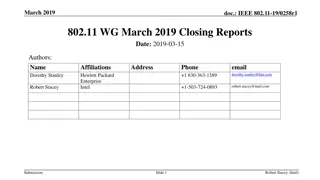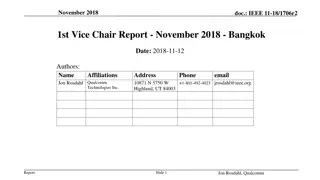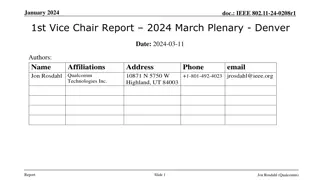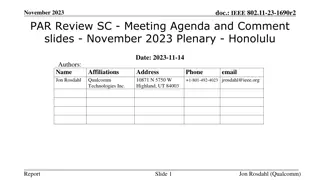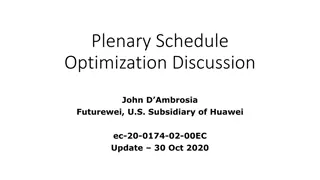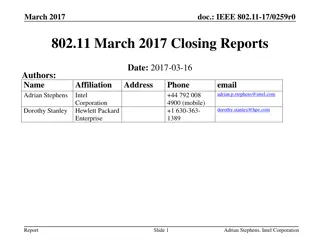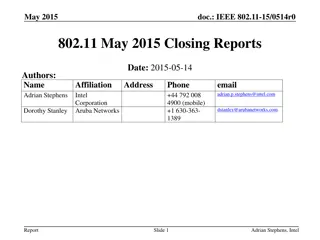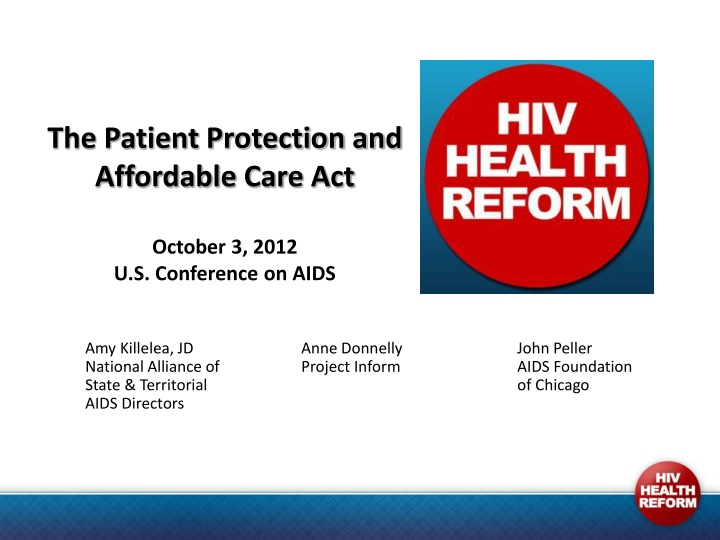
Impact of ACA on State Health Reform Implementation
Learn about the implementation of the Affordable Care Act (ACA) and its impact on state health reforms, including Medicaid expansion, benefits requirements, and advocacy imperatives for HIV prevention and treatment. Explore key decision points, a timeline, and the importance of comprehensive benefits coverage. Stay informed on how states can benefit from expanding Medicaid and providing essential health benefits to low-income adults.
Download Presentation

Please find below an Image/Link to download the presentation.
The content on the website is provided AS IS for your information and personal use only. It may not be sold, licensed, or shared on other websites without obtaining consent from the author. If you encounter any issues during the download, it is possible that the publisher has removed the file from their server.
You are allowed to download the files provided on this website for personal or commercial use, subject to the condition that they are used lawfully. All files are the property of their respective owners.
The content on the website is provided AS IS for your information and personal use only. It may not be sold, licensed, or shared on other websites without obtaining consent from the author.
E N D
Presentation Transcript
The Patient Protection and Affordable Care Act October 3, 2012 U.S. Conference on AIDS Amy Killelea, JD National Alliance of State & Territorial AIDS Directors Anne Donnelly Project Inform John Peller AIDS Foundation of Chicago
State Health Reform Implementation: Where the Rubber Meets the Road Amy Killelea, JD National Association of State and Territorial AIDS Directors akillelea@NASTAD.org (202) 434-8054
ACA Advocacy Imperatives: The Big Three 1. Ensure that every state expands Medicaid in 2014 2. Ensure that the benefits requirements in both Medicaid and private insurance meet HIV prevention, care, and treatment needs 3. Ensure that exchanges are designed and implemented in ways that incorporate HIV providers and expertise and ensure continuity of care
Health Reform Decision Points Source: Treatment Access Expansion Project, May 2012
Health Reform Timeline Source: Treatment Access Expansion Project, May 2012
1) Ensure that Every State Expands Medicaid in 2014 What happens in a state that does not comply with expansion?
States with Most Restrictive Medicaid Programs Have Most to Gain from Expansion Medicaid Coverage of Low Income Adults, January 2012
2) Ensure that Benefits Requirements Are Comprehensive Essential Health Benefits (EHB) States must provide newly eligible Medicaid beneficiaries and people insured in the individual and small group market with benchmark coverage (based on private insurance market) Benchmark coverage must include the ten categories of EHB services For Medicaid, benchmark coverage must also meet existing Social Security Act requirements and protections
Why Does Benchmark Coverage Matter? Ongoing Concerns for Private Insurance EHB Benchmark: Current prescription drug requirements are weak (plans must cover only one drug in each class) Service limits and utilization management techniques may continue Medicaid benchmark plans have been used by states to offer slimmer benefits packages: Wisconsin BadgerCare Core Plan: Restricted formulary No branded ARVs http://t0.gstatic.com/images?q=tbn:ANd9GcSlqxMEhNcAh-GbuwH28CGRJTZV4iwna3y6yIZOUKZvMViOqUrNRw
3) Be at the Table as Exchanges are Designed and Implemented Exchange Establishment Options for exchange implementation: State-based exchange (16 states and DC so far) Federally-facilitated exchange Partnership/hybrid model ALL exchanges must have: Outreach/patient navigator programs Plan certification criteria (including network adequacy standards) Interface w/Medicaid
Community Preparation Ongoing state implementation issues Continuity of care and payer of last resort compliance Infrastructure to serve an insured population Community Health Centers Public hospitals (DSH, county, state) Private physicians HIV System of Care Community- based organizations Non-physician providers University hospitals
Health Care Reform A California State Perspective Anne Donnelly, Project Inform adonnelly@projectinform.org 415.558.8669 X208
State Advocacy and Planning Matters Many, if not, most key health care reform decisions will be made at the state level Federal government sets framework; states operationalize Every state is on a different timeline Different populations Different political and fiscal realities People with HIV and their providers face a unique challenge Mandatory transition from Ryan White to new care system Ensuring continued delivery of comprehensive services A relatively small population in the context of HCR
Key Decision Tables In California Medicaid Expansion ---> Department of Health Care Services July 2011 - partial and temporary Medicaid expansion Still much to do for full expansion in 2014 Multiple stakeholder advisory groups and stakeholder work groups Got to the table by: Continuous contact with the Department of Health Care Services; Engaging the Governor s office and working with key legislators; Doing the work & working with other health care advocates
Key Decision Tables In California CA State Health Benefit Exchange ---> CA Exchange Board Exchange established and working Benchmark plan chosen Kaiser small employer plan RFP for plans will be sent this month Multiple stakeholder groups, meetings, webinars & comment solicitation Got to the table by: Showing up, speaking up, & making comments Meeting with staff , Board members and the Executive Director
Key Decision Tables In California Governor s office and Legislature ---> State statute necessary to establish the Exchange, Medicaid expansion, responsible for costs Exchange operational; EHB benchmark for the Exchange chosen Prohibition on pre-existing conditions vetoed Special legislative session called for December for Medicaid expansion Got to the table through: Long standing relationships with staff and other health advocates Implementing changes in HIV care delivery system ---> no one currently charged with this Implementation planning for 2014 hasn t really begun Working with State Office of AIDS to take leadership They are not currently funded or staffed to take this on Even less implementation planning has occurred at the local level
Lessons Learned State Advocacy & Planning We have to start now We can t do this alone: essential to partner with other low income and disease specific advocates & state administrators We can t wait for guidance from HRSA, CMS, CCIIO, HHS etc. There are multiple decision tables People with HIV, their providers and advocates will likely not be invited to the discussion It won t always be clear where or how decisions are being made There is no one person or agency in charge of these changes for people with HIV Will require new roles for all Including people with HIV , advocates, providers, agencies If one approach doesn t work try another
Lessons Learned State Advocacy & Planning HIV specific state entities need to be supported in taking on new roles The voice of people with HIV in state processes Medicaid & Exchanges unlikely to have HIV expertise Collaborate with colleagues in Medicaid services and at the Exchanges For most this is a new way of working breaking thru silos Monitor implementation of Medicaid expansion and Exchanges Engage with implementation decisions Develop new programs to secure safe transitions and continuity of quality HIV care
Role of Local Communities Federal and state agencies will not provide a road map for local areas Now is the time for everyone to get involved! Can t afford to wait for guidance and answers; have to move forward in spite of unknowns SF forming a HCR task force goals: Develop a transition plan for individual, providers and services Plan for comprehensive service delivery post transition Plan for clients left out of health care reform Be strategic - set purpose and goals Identify client populations and their needs Identify HIV provider needs Prioritize the most vulnerable clients and/or providers
Preparing for Health Care Reform in Your Community & Agency John Peller, AIDS Foundation of Chicago jpeller@aidschicago.org (312) 334-0921
Getting Ready for ACA: The New Landscape Ryan White Program, SAMSHA, CDC prevention fund aren t going away, but we will likely see reduced funding in the future Start preparing NOW for a new environment in our agencies: Partnerships, Mergers, Collaborations Our AIDS-specific expertise is a tool that will help Medicaid and private insurance reduce costs and improve health outcomes
How HIV Care is Paid For Today & How It Will Change in 2014 45% 42% 40% 35% 30% 24% 25% 20% 13% 15% 12% 10% 5% 0% Private Ryan White or Uninsured Medicaid Medicare Notes: Based on Patients with HIV Attending Medical Offices Participating in HIVRN; N=19,235. Medicaid includes those with Medicare coverage. Source: Data from K. Gebo and J. Fleishman, in Institute of Medicine, HIV Screening and Access to Care: Exploring the Impact of Policies on Access to and Provision of HIV Care, 2011. Excludes 8% unknown coverage.
What services can be reimbursed by Medicaid or private insurance? Today Mental health Substance abuse Case management or Care coordination HIV testing Prevention counseling Maybe in the future Peer services Outreach & engagement But advocacy & agency infrastructure are needed to ensure ASOs can get reimbursed
Services funded by the Ryan White Program must wrap around other payers Mental Health Case management Private insurance will pay for 20 visits per year Ryan White funds can be used for the rest of the year Medicaid: accompany clients to medical visits, treatment adherence education Ryan White Program will pay for referral to a food pantry or Food Stamps enrollment assistance
What were doing at AFC Negotiating with a Medicaid managed care company to provide care coordination for people with HIV 58 of their 204 clients are already enrolled in HIV case management Determined which supportive housing services are Medicaid-reimbursable and advocating for changes (posted on www.HIVHealthReform.org)
HIVHealthReform.org Resources Monthly webinars Email newsletter Blog posts highlight exactly what you need to know
Resources Project Inform www.projectinform.org NASTAD www.NASTAD.org Treatment Access Expansion Project www.taepusa.org Families USA www.familiesusa.org National Health Law Program www.nhelp.org
Health Care Reform Planning If we wait for governments, it ll be too little, too late. If we act as individuals, it ll be too little. But if we act as communities, it might just be enough, just in time. Transition network






